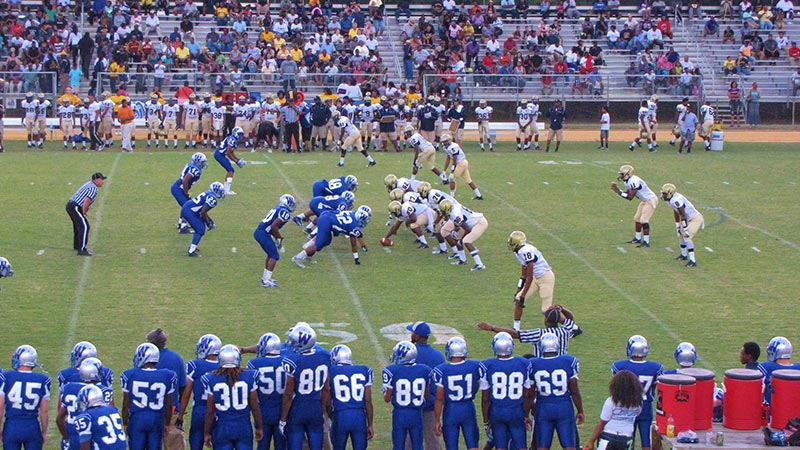What’s a Spread Offense?
Spread offense is when you have four receivers (usually), five linemen, and running back and a quarterback.
The two wide receivers are spread out and there are two additional receivers (slot receivers) usually between wides and the offensive line.
Pros of a Spread Offense
First of all, this formation spreads the defense out. It opens up passing lanes and running lanes.
The read option is a good way to use the spread. (If you want to find out more about option plays, here’s a breakdown of the triple option.) Another way this is helpful is that you can get the matchups you want. Like getting a linebacker covering a receiver or a cornerback covering a tight end.
Cons of a Spread Offense
There is only one disadvantage to this formation that I can think of: You are limited on blockers. With 5 offensive linemen and 4 receivers, you only have the QB and running back in the backfield. So blitzes are particularly effective against a spread offense.
That being said, the defense can’t leave a receiver uncovered. So it’s not like the other team can send a 7-man blitz. That’s a touchdown for you because you have an open receiver.
What is the Spread Offense Used For?
When I think of spread offense, I think of 40-50 points scored.
But this is only when you have the best running the show at every position. Spread offense tends to be more fast-paced because it’s usually used in a hurry-up offense. But a hurry-up offense doesn’t mean more points scored or games won.
A spread offense is a great tool in your toolbox, but may or may not be the best tool. That all depends on your style, players, the defense, and league.
Image: The E.E. Smith Golden Bulls (white) of North Carolina line up in a spread offense. Gerry Dincher, Flickr

